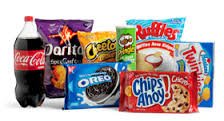Few would deny that the abundance of high calorie foods couples with a sedentary lifestyle is in the most part responsible for the surge in obesity in modern times. However, despite all the good advice about the importance of diet and exercise, there are anomalies in this theory. For example, there are those who scarcely eat all day, with low calorie dietary records that would leave many ravenous, but who still fail to lose weight. Those people who just seem to have a metabolic block.
Calories alone don’t explain the obesity epidemic
When international scientific experts gathered in Sweden late last year they demonstrated without a doubt that the increase in calorie intake in recent years does not fully account for the global increase in body weight. 1 They instead pointed to mounting research suggesting that chemical burden is the hidden X factor in obesity and obesity-related disease.2,3 In a consensus statement published in May 2016, these scientists urged decision-makers across government, science and industry to take action to reduce the burden of environmental contaminants – so that ‘obesity does not become the normal outlook in future.’4.
Fat is a toxic buffer
Looking at the obesity epidemic from a new angle, some scientists have suggested that weight gain may actually be an adaptive response to toxicity. 5,6,7 Many environmental toxins are fat soluble with a high affinity for adipose (fatty) tissue. It has been proposed that when confronted with toxicity, the body may increase production of fat cells and lipids in an attempt to ‘soak up’ the toxins into fat tissue and limit exposure of vital organs.8 While the body may be making the best of a bad situation, the consequence is often a highly resistant form of obesity. As described below, environmental toxins cause severe insulin resistance, along with mitochondrial dysfunction and an inflammatory state in the adipose tissue known as adiposopathy, all of which impair metabolism and contribute to long term chronic disease risk.9,10,11
When an individual with adipose stored toxins loses weight, the chemicals are released into circulation as fat is mobilised. Studies tracking toxin levels have shown that plasma pollutant levels rise during weight loss and that this is accompanied by a drop in metabolic rate, and in some situations, cessation of fat burning altogether. 12,13,14,15 This research has significant implications for all seeking to lose weight and may be a significant factor in the problems experienced during weight loss, such as plateaus, fatigue and rebound weight gain.
NOTE: Whenever trying to lose weight it is recommended that you seek professional support to help with detoxification and prevent metabolic damage.
What are some obesogens
An obesogen is a substance that is toxic to the body and thus contributes to fat gain. Early studies involved tributyltin – an anti-fouling paint used on the hulls of ships and now ubiquitous in all oceans and waterways on the planet, not to mention those involved in handling this paint regularly.
 Phthalates and other plasticisers such as bisphenol-A have since been found to have a similar effect on adipocyte development.18
Phthalates and other plasticisers such as bisphenol-A have since been found to have a similar effect on adipocyte development.18
One of the biggest classes of obesogens are the persistent organic pollutants (POPs) – including organochlorines, organophosphates, organobromines and dioxins (found as pesticides, insecticides, flame retardants, and industrial contaminants). POPs are known to effectively render insulin signalling redundant, blocking intracellular signal transduction and preventing the insulin-stimulated expression of glucose transporters on cells.19,20 The potency of this disruption has been demonstrated by the skyrocketing incidence of diabetes following large-scale environmental exposures such as in the Vietnam veterans exposed to Agent Orange, and populations in an industrial accident in Seveso, Italy. In 2011, well-known experts Dr Duk Lee and colleagues published results of a 20 year follow-up study of otherwise healthy 18 to 30 year olds, finding clear associations between individual POP at baseline and the development of specific metabolic characteristics such as increased weight and serum triglycerides and lower serum HDL cholesterol and insulin sensitivity.21
Even more striking is the isolated association of POPs with diabetes risk, independent of any effects on weight. Research has shown that both as body mass (BMI) and POP exposure increases, so does diabetes prevalence, reaching as high as 60% in the highest risk population. Conversely, it can also be said that those with the lowest levels of POPs have no association of weight or diabetes risk.22
While the effects of POPs and plasticisers is becoming increasingly recognised, even air pollution could be making us fat. A 2016 study showed how animals exposed to polluted Beijing air for just three weeks weighed 15% more than those provided with filtered air, with the researchers proposing that the pollution-related inflammation in the lungs had systemic consequences, leading to metabolic dysfunction and weight gain.24
Transgenerational effects
 One of the infamous organochlorine insecticides, dichlorodiphenyltrichloroethane (DDT) was one of the first to demonstrate a disturbingly insidious effect – one that impacts future generations. One of the early researchers in this area, Dr Mike Skinner, showed initial doses administered to rats showed minimal immediate side effects. However, as the rats went on to breed, by the third generation of unexposed rats (the original animals’ great grandchildren), over 50% of the males and females were markedly obese.25 The researchers speculate, alarmingly, that the current generation of children are suffering a fate that parallels that of the successive generations of rat seen in the experiment – as the primary human exposures to DDT in Western countries occurred in the 1950’s, three generations ago.26 Further, while DDT is thought by many to be an unfortunate skeleton in the closet of the past, many new generations are still being exposed globally through its sanctioned use in Africa, India and other developing countries for the control of malaria.27
One of the infamous organochlorine insecticides, dichlorodiphenyltrichloroethane (DDT) was one of the first to demonstrate a disturbingly insidious effect – one that impacts future generations. One of the early researchers in this area, Dr Mike Skinner, showed initial doses administered to rats showed minimal immediate side effects. However, as the rats went on to breed, by the third generation of unexposed rats (the original animals’ great grandchildren), over 50% of the males and females were markedly obese.25 The researchers speculate, alarmingly, that the current generation of children are suffering a fate that parallels that of the successive generations of rat seen in the experiment – as the primary human exposures to DDT in Western countries occurred in the 1950’s, three generations ago.26 Further, while DDT is thought by many to be an unfortunate skeleton in the closet of the past, many new generations are still being exposed globally through its sanctioned use in Africa, India and other developing countries for the control of malaria.27
Long term impacts through impaired methylation
There are a number of theories that explain the powerful transgenerational effects of POPs. To some degree, POPs are actually physically passed on between generations through the maternal line – as pregnancy fat stores are liberated for milk production, the milk becomes a rich source of POPs.28 Other effects of maternal POP exposure can be programmed into the infant through epigenetic modifications where important genes controlling metabolism and appetite are switched on or off in utero, setting up the individual for impaired function throughout life, even in the long term absence of the toxin.29
These epigenetic modifications may be related to the impact of POP toxicity on methylation, crucial for maintaining healthy epigenetic function in the adult and the offspring. POPs are known to be persistent in the environment and to bio-accumulate largely due to their difficulty in being detoxified by human xenobiotic enzymes, such as phase l and ll enzymes.30 Chronic POP toxicity places a large burden on methylation capacity – one of our body’s major detoxification pathways.
Microbiome-related mechanisms of disease
Environmental toxins may also create long-lasting effects, potentially transgenerational, through microbiome disruption. Numerous new studies within the last year have demonstrated the effects of pesticides and plasticisers on the microbiome, with changes in microbiome composition, function and gene expression demonstrated in animal models.37,38,39 The microbiome is now well recognised to be an important contributor to weight gain and metabolic risk.40
Minimising packaged foods likely has double benefits for obesity and related metabolic disorders. Obese children have higher levels of BPA in the urine, likely a marker of both the obesogenic effects of plasticisers as well as that of the processed food contained inside the wrappers.
 Junk food consumption has been demonstrated to be accompanied by elevated levels of phthalates,45 and microwaving foods in plastic wrap, plates, cups or bags has been indisputably proven to increase the release of endocrine-disrupting products,46 providing important modifiable risk factors for consumer. Further support for the potential impact of dietary change came last year when researchers demonstrated that in children switching to organic food for just one week, levels of pesticides and herbicides in the urine were reduced by 25 5o 50%,47 reawakening the debate about the superiority or otherwise of organic food.
Junk food consumption has been demonstrated to be accompanied by elevated levels of phthalates,45 and microwaving foods in plastic wrap, plates, cups or bags has been indisputably proven to increase the release of endocrine-disrupting products,46 providing important modifiable risk factors for consumer. Further support for the potential impact of dietary change came last year when researchers demonstrated that in children switching to organic food for just one week, levels of pesticides and herbicides in the urine were reduced by 25 5o 50%,47 reawakening the debate about the superiority or otherwise of organic food.
Toxins play a huge role in our health. If you have difficulty with weight, blood sugar irregularities, unexplained fatigue, poor concentration or experiencing problems conceiving, perhaps a full health assessment may provide some answers.
For an appointment, call True Medicine on 07 5530 1863.
Source: Metagenics Update, Marla Cunningham
